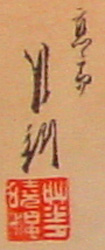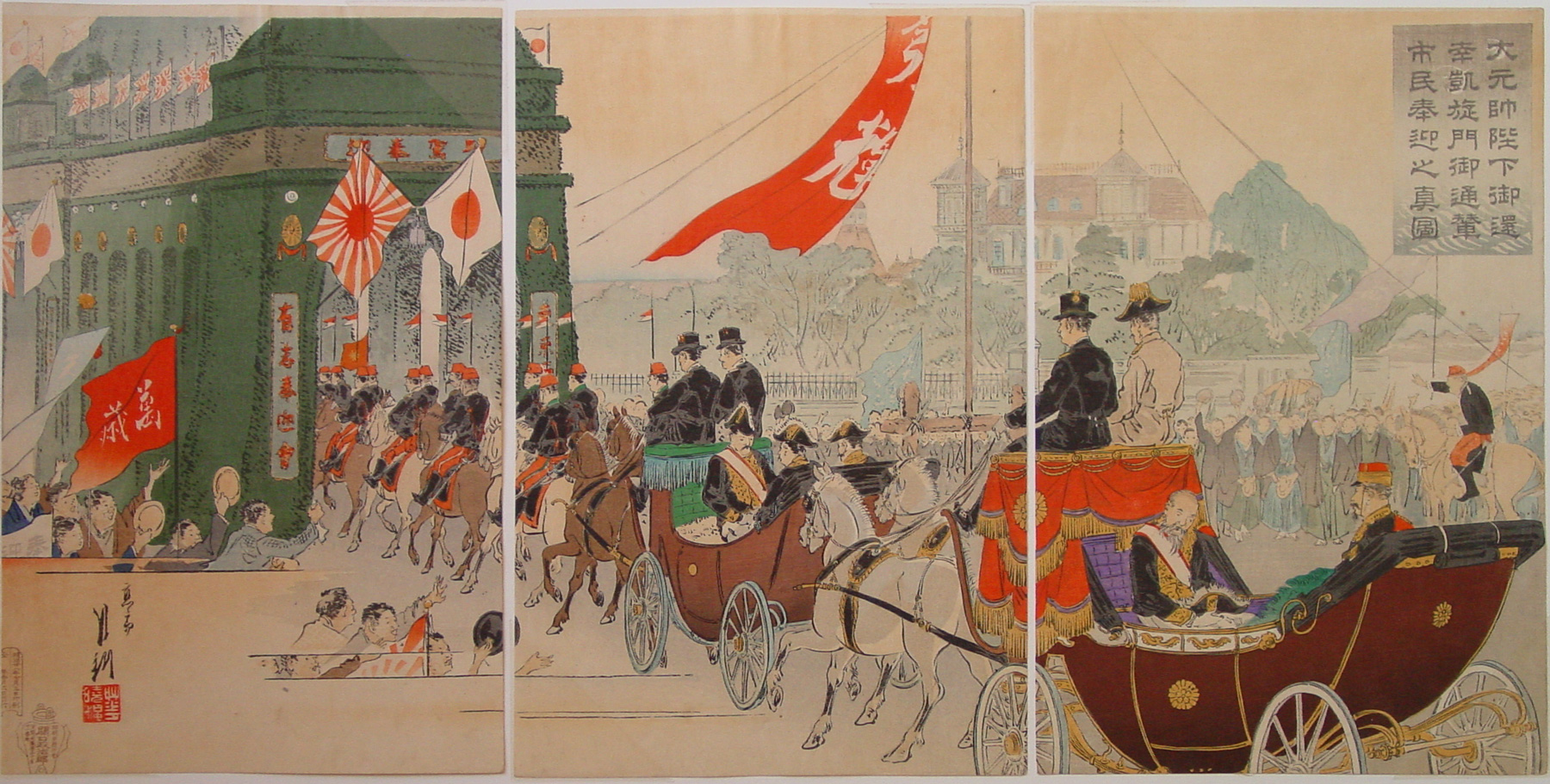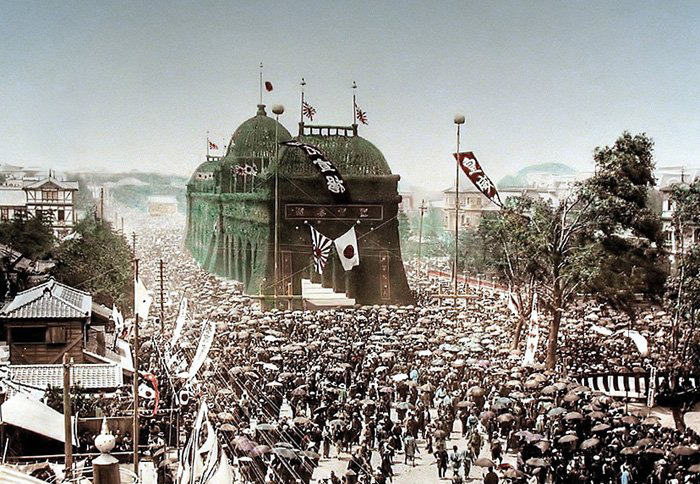About This Print
There are several other prints (see IHL Cat. #2286) that also depict this scene of Emperor Meiji's procession through the Hibiya Triumphal Arch in Tokyo after his return from Kyoto on May 30, 1895. In this print the emperor himself is not pictured.According to Donald Keene1, the emperor was not in a rush to return to Tokyo from Kyoto2: "[W]hen it was announced that the imperial headquarters would move back to Tokyo on May 29, he resisted leaving, saying that some major figures in the victory over China had not yet had their triumphal return. But when the last of the heroes of the war had returned in triumph, there was no longer any excuse for remaining in Kyoto, and the emperor left for Tokyo on May 29."
"He arrived at Shinbashi Station on the thirtieth, in military dress as usual, and paraded through a garishly decorated city that was packed with huge throngs of people. Tokyo’s citizens put out national flags and decorative lanterns in front of their houses and filled the streets with banners, streamers, and arches of many kinds. The most striking temporary monument for the city was a huge “triumphal arcade,” widely touted as having no equal in any country, which was constructed at Hibiya between the official residences of the presidents of the two Diet houses. So large was this arcade - 110 meters long and 18 meters in height, with a main tower over 30 meters high and 8 meters wide – that the city government reportedly put one thousand laborers to work to widen Saiwaichō Avenue on which it was constructed. The Tokyo City Assembly also built two other great triumphal arches, one each at Shinbashi and Sakuradamon, both of which were thirty-three meters high and over three meters thick."3
At left, members of the crowd hold aloft a banner inscribed "Banzai," literally "Ten-thousand years."
Hibiya Triumphal Arch May 30, 1895 (hand-colored photograph)At left, members of the crowd hold aloft a banner inscribed "Banzai," literally "Ten-thousand years."
1 Emperor of Japan: Meiji and His World, 1852-1912, Donald Keene, Columbia University Press, 2002, p. 508.
2 Following the signing of the peace treaty at Shimonoseki, ending the Sino-Japanese War, the emperor left for Kyoto, the new location of the imperial headquarters. The emperor was not pleased when the headquarters were moved to Tokyo within a month after his arrival.
3 Splendid Monarchy: Power and Pageantry in Modern Japan, T. Fujitani, University of California Press, 1998 p. 130.
last revision:
Print Details
| IHL Catalog | #192 |
| Title or Description | True Depiction of Citizens Greeting the Carriage of His Imperial Majesty and Commander-in-Chief upon His Return through the Triumphal Arch Daigensui heika gokan kōgaisenmon gotsūren shimin hōgei no shinzu [Daigensui heika okaeri gaisenmon gotsūren shimin hōgei no shinzu] 大元帥陛下御還幸凱旋門御通輦市民奉迎之真圖 |
| Artist | Ogata Gekkō (1859-1920) |
| Signature |  |
| Seal | Engyōryō [kagyōrō] 華暁樓 [see the website The Woodblock Prints of Ogata Gekko |
| Publication Date | July 1895 (Meiji 28) |
| Publisher |  |
| Impression | excellent |
| Colors | excellent |
| Condition | excellent - left margin trimmed into image; light soiling |
| Genre | ukiyo-e; senso-e (Sino-Japanese War) |
| Miscellaneous | |
| Format | vertical oban triptych |
| H x W Paper | 13 7/8 x 9 1/4 in. (35.2 x 23.5 cm) each sheet (Note: left sheet only 9” wide) |
| Literature | Conflicts of Interest: Art and War in Modern Japan, Philip K. Hu, et. al., Saint Louis Museum of Art, 2016, p. 155, pl. 58 |
| Collections This Print | Museum of Fine Arts, Boston: Jean S. and Frederic A. Sharf Collection 2000.503a-c; Smithsonian Freer Gallery of Art and Arthur M. Sackler Gallery S1999.61a-c; Saint Louis Museum of Art 344:2010a-c |
4/15/2020



